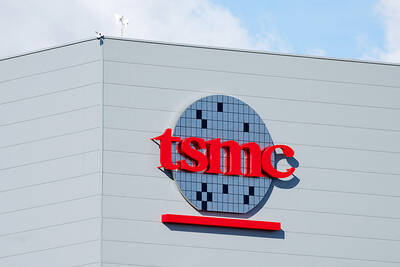Banks approved mortgages and construction loans at a slower pace last month, but it is unclear if the trend would continue or if it was due to fewer working days in the month, the Financial Supervisory Commission (FSC) said yesterday.
New mortgages expanded NT$26 billion (US$909.03 million) from January, compared with a monthly rise of NT$64.9 billion in January, while new construction loans grew NT$20.6 billion last month, compared with a monthly growth of NT$24 billion in the previous month, the commission told a news conference in New Taipei City.
Overall, mortgages and construction loans grew NT$46.5 billion month-on-month, a smaller increase than the more than NT$100 billion for some months last year, data showed.

Photo: Cheng I-hwa, Bloomberg
On a yearly basis, new housing loans grew 9.22 percent last month, the lowest increase in four months, while new construction loans rose 12.55 percent, flat from a month earlier, data showed.
The ratio of non-performing loans for mortgages last month was 0.08 percent, while it was 0.05 percent for construction loans, data showed.
In addition to fewer working days last month because of the Lunar New Year and 228 Peace Memorial Day holidays, the central bank’s selective credit control measures and the commission’s financial examinations on banks’ mortgage practices also helped slow lending, Banking Bureau Deputy Director-General Lin Chih-chi (林志吉) said.
It is uncertain if the central bank last week raising its policy rates by 25 basis points would further cap the growth of mortgage and construction loans this month.
The commission last month raised the risk weighting for five types of mortgages and loans issued by local banks to as high as 200 percent, a measure aiming to rein in rising housing prices.
Current regulations cap a bank’s mortgages and construction loans at 30 percent of its deposits and bank debentures, meaning that a bank whose ratio is higher than 29 percent and another five banks with ratios between 28 and 29 percent are being monitored by the commission, Lin said.
Local banks’ average property loan-to-deposit ratio fell 0.1 percentage points month-on-month to 26.89 percent last month because of an increase in deposits, he added.

Taiwan Semiconductor Manufacturing Co (TSMC, 台積電) secured a record 70.2 percent share of the global foundry business in the second quarter, up from 67.6 percent the previous quarter, and continued widening its lead over second-placed Samsung Electronics Co, TrendForce Corp (集邦科技) said on Monday. TSMC posted US$30.24 billion in sales in the April-to-June period, up 18.5 percent from the previous quarter, driven by major smartphone customers entering their ramp-up cycle and robust demand for artificial intelligence chips, laptops and PCs, which boosted wafer shipments and average selling prices, TrendForce said in a report. Samsung’s sales also grew in the second quarter, up

LIMITED IMPACT: Investor confidence was likely sustained by its relatively small exposure to the Chinese market, as only less advanced chips are made in Nanjing Taiwan Semiconductor Manufacturing Co (TSMC, 台積電) saw its stock price close steady yesterday in a sign that the loss of the validated end user (VEU) status for its Nanjing, China, fab should have a mild impact on the world’s biggest contract chipmaker financially and technologically. Media reports about the waiver loss sent TSMC down 1.29 percent during the early trading session yesterday, but the stock soon regained strength and ended at NT$1,160, unchanged from Tuesday. Investors’ confidence in TSMC was likely built on its relatively small exposure to the Chinese market, as Chinese customers contributed about 9 percent to TSMC’s revenue last

With this year’s Semicon Taiwan trade show set to kick off on Wednesday, market attention has turned to the mass production of advanced packaging technologies and capacity expansion in Taiwan and the US. With traditional scaling reaching physical limits, heterogeneous integration and packaging technologies have emerged as key solutions. Surging demand for artificial intelligence (AI), high-performance computing (HPC) and high-bandwidth memory (HBM) chips has put technologies such as chip-on-wafer-on-substrate (CoWoS), integrated fan-out (InFO), system on integrated chips (SoIC), 3D IC and fan-out panel-level packaging (FOPLP) at the center of semiconductor innovation, making them a major focus at this year’s trade show, according

DEBUT: The trade show is to feature 17 national pavilions, a new high for the event, including from Canada, Costa Rica, Lithuania, Sweden and Vietnam for the first time The Semicon Taiwan trade show, which opens on Wednesday, is expected to see a new high in the number of exhibitors and visitors from around the world, said its organizer, SEMI, which has described the annual event as the “Olympics of the semiconductor industry.” SEMI, which represents companies in the electronics manufacturing and design supply chain, and touts the annual exhibition as the most influential semiconductor trade show in the world, said more than 1,200 enterprises from 56 countries are to showcase their innovations across more than 4,100 booths, and that the event could attract 100,000 visitors. This year’s event features 17